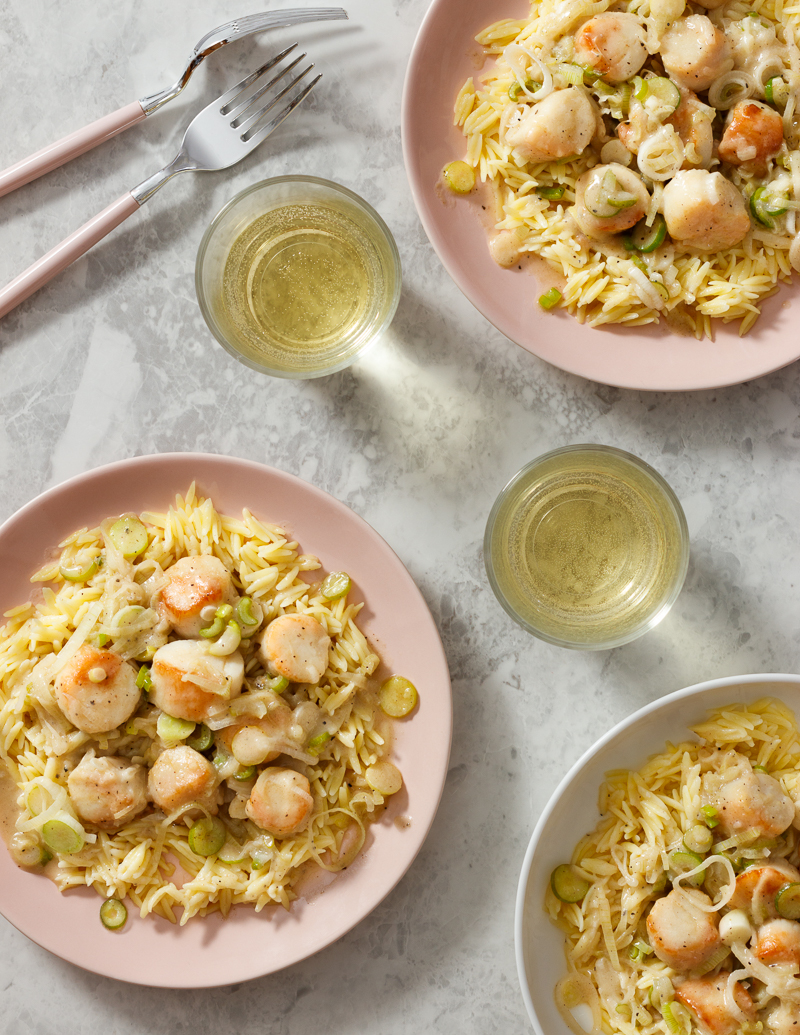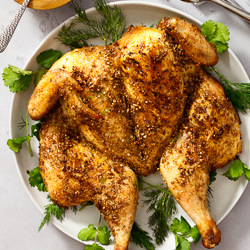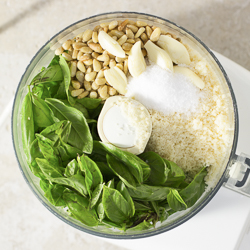Adapted from the Chardonnay chapter of “100 Perfect Pairings: Main Dishes to Enjoy with Wines You Love” by Jill Silverman Hough (Wiley, 2011)
A classic, deliciously indulgent combination of flavors that’s ridiculously easy to make at home. If you like, you can substitute shrimp for the scallops, or use a combination of both.
You can also substitute a cup of springy peas for the spring onions. Add fresh ones to the pot with the orzo during the last 3 minutes of cooking or add thawed, previously frozen ones to the skillet along with the garlic.
Serves 4
- 6 ounces orzo pasta
- 2 tablespoons all-purpose flour
- 1 1/4 pounds scallops, ideally sea scallops (see note)
- 2 tablespoons extra virgin olive oil
- 4 cloves garlic, smashed
- 4 tablespoons (1/2 stick) unsalted butter, divided
- 4 spring onions or 8 green onions, white and light green parts only, thinly sliced
- 1/4 cup Chardonnay, or other dry white wine
- 1 1/2 teaspoons coarse kosher salt, or more to taste
- 1/2 teaspoon freshly ground black pepper, or more to taste
- 1 tablespoon fresh lemon juice
In a medium pot of boiling, well-salted water (1 tablespoon of coarse kosher salt per quart), cook the pasta according to package directions.
Meanwhile, place the flour in a small bowl. Lightly dredge the scallops in the flour. In a large skillet over medium-high heat, warm the olive oil. Add the scallops and cook until browned, about 1 minute per side. Add the garlic and 2 tablespoons of the butter and cook, stirring occasionally, for 1 minute. Add the onions and cook, stirring occasionally, until the scallops are just cooked through, about 1 minute. Add the wine, salt, and pepper and cook, stirring, until the liquid comes to a boil. Remove the skillet from the heat and stir in the lemon juice and remaining 2 tablespoons of butter. Taste, ideally with your wine, and add more salt and/or pepper if you like.
Drain the pasta, then transfer to a platter or plates. Top with the scallop mixture and serve hot.
NOTE Sea scallops are 1 1/2 to 2 inches in diameter, as opposed to bay scallops, which are about 1/2 inch. (The only ones available for my photo were something in between, about 1 inch.) Look for scallops that have a slightly beige or pinkish hue. If they’re stark white, it’s a sign that they’ve been soaked in water—which increases their weight (meaning you’re paying for water) and makes them less likely to get nicely browned.









